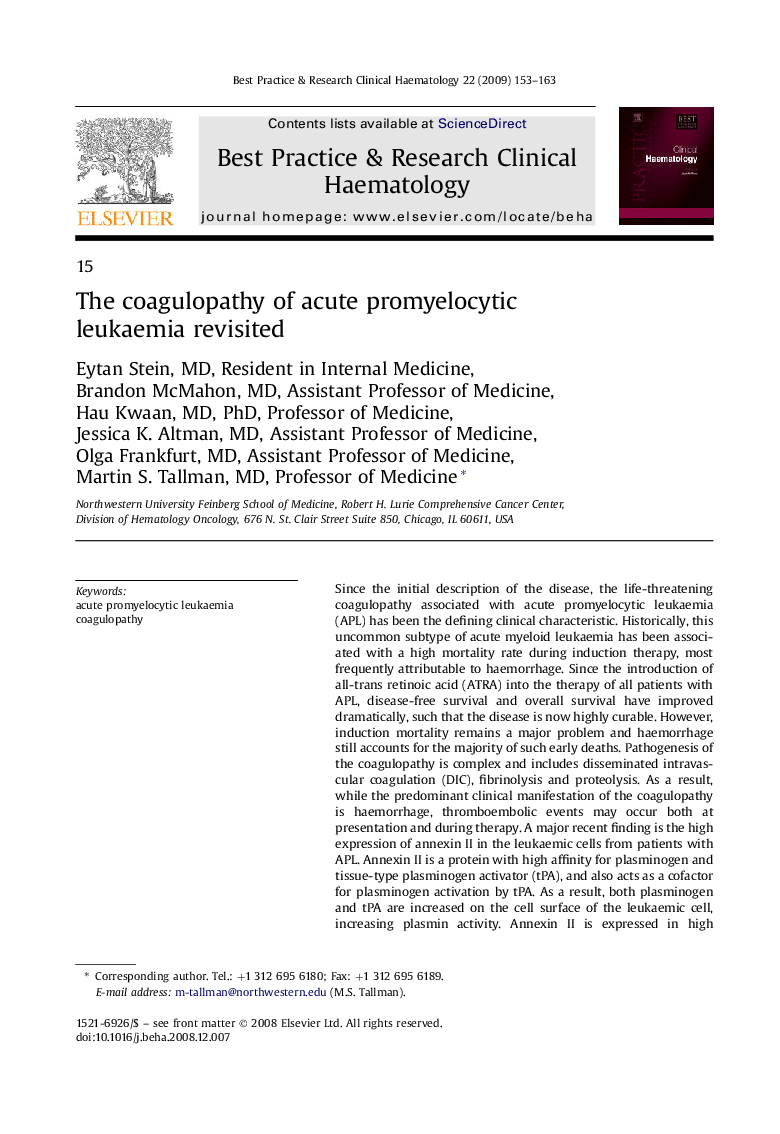| کد مقاله | کد نشریه | سال انتشار | مقاله انگلیسی | نسخه تمام متن |
|---|---|---|---|---|
| 2100424 | 1083000 | 2009 | 11 صفحه PDF | دانلود رایگان |

Since the initial description of the disease, the life-threatening coagulopathy associated with acute promyelocytic leukaemia (APL) has been the defining clinical characteristic. Historically, this uncommon subtype of acute myeloid leukaemia has been associated with a high mortality rate during induction therapy, most frequently attributable to haemorrhage. Since the introduction of all-trans retinoic acid (ATRA) into the therapy of all patients with APL, disease-free survival and overall survival have improved dramatically, such that the disease is now highly curable. However, induction mortality remains a major problem and haemorrhage still accounts for the majority of such early deaths. Pathogenesis of the coagulopathy is complex and includes disseminated intravascular coagulation (DIC), fibrinolysis and proteolysis. As a result, while the predominant clinical manifestation of the coagulopathy is haemorrhage, thromboembolic events may occur both at presentation and during therapy. A major recent finding is the high expression of annexin II in the leukaemic cells from patients with APL. Annexin II is a protein with high affinity for plasminogen and tissue-type plasminogen activator (tPA), and also acts as a cofactor for plasminogen activation by tPA. As a result, both plasminogen and tPA are increased on the cell surface of the leukaemic cell, increasing plasmin activity. Annexin II is expressed in high amounts in cerebral microvascular endothelial cells, perhaps accounting for the relatively high incidence of intracranial haemorrhage in APL compared with other sites. Microparticles are cell-derived membrane fragments originating from normal cells or released from malignant cells involved in activating coagulation. Recent studies have found that microparticles containing tissue factor, tPA, plasminogen activator inhibitor-1 and annexin II have been found in the plasma of APL patients, suggesting a role in pathogenesis of the coagulopathy. Treatment of the coagulopathy remains primarily supportive. Aggressive transfusions of platelets and cryoprecipitate appear to be important. There is no clear role for the routine use of heparin or antifibrinolytic therapy. The most important factor may be the early introduction of ATRA at the first suspicion of a diagnosis of APL, before it is confirmed genetically.
Journal: Best Practice & Research Clinical Haematology - Volume 22, Issue 1, March 2009, Pages 153–163